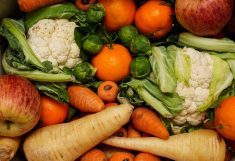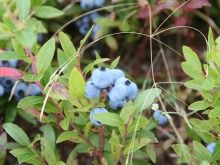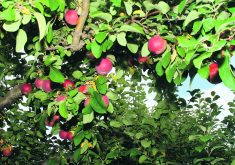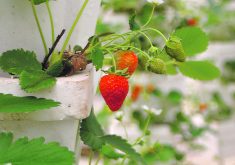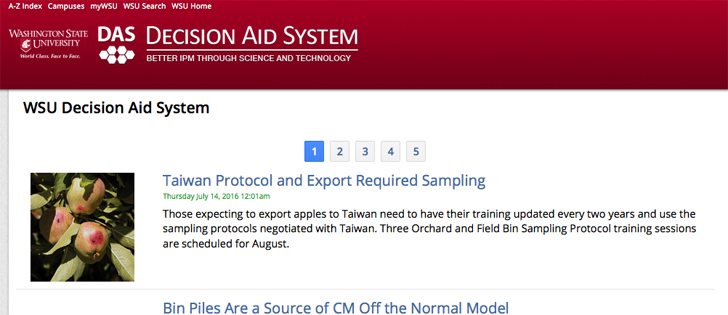Growers say they’re pleased with overall yield, fruit size and colour of this year’s apple crop
SUMMERLAND, B.C. — Final numbers for the British Columbia apple crop aren’t in yet, but the province’s fruit growers association is thinking big.
“It looks like the size is above average so far,” said Glen Lucas, general manager of the B.C. Fruit Growers Association in Kelowna.
He said the overall yield will also be above average if the harvest continues to bring in larger sized apples.
He said there were concerns this spring with the early start to the growing season. An early frost could have seriously damaged blossoms, but growers managed to get safely through to summer.
Read Also

Farming Smarter receives financial boost from Alberta government for potato research
Farming Smarter near Lethbridge got a boost to its research equipment, thanks to the Alberta government’s increase in funding for research associations.
The periodic rain proved less of a problem for apples than it was for cherries and other soft fruits, so growers came through the summer without too much headache, he said.
“Now we’re into mid-September, well past the peak harvest and managing the labour, so largely the season was successful. The colour is phenomenal because we continue to have mild weather,” he said, referring to the cool nights and spotty rain.
“It really helps the apples colour up.”
As well, because apples store better than soft fruits, there is not the same rush to get the fruit to market.
“Horticulturally, it is good and we are looking for a strong marketing year.”
Lucas said Ambrosia apples continue to be a top seller. Marketers expect 632,900 bushels this season, compared to 545,800 bu. in 2015, according the Canadian Horticultural Council.
The largest apple crop in B.C. continues to be the Gala variety, with 1.32 million bu. expected, compared to 1.19 million bu. last year.
Lucas predicts Ambrosia production will pass Gala output in about two years.
Spartan is third on the production list at 345,400 bu. predicted for this year, with Macintosh in fourth place at 233,300.
The once dominate Red Delicious apple is predicted to decline by another 10.2 percent this year compared to last, with 2016 estimates at 142,100 and 2015 output at 158,200.
Lucas also expects no unusual market difficulties with B.C. fruit growers’ top competitors in Washington state.
He credits B.C.’s rapid change to new varieties for keeping growers in the province a step ahead.
He said Washington state growers have increased acreage dramatically during the past 20 years, but the impact of that is greater in the Eastern United States and Eastern Canada.
“It has pinched them a little bit more than it has here,” he said.





